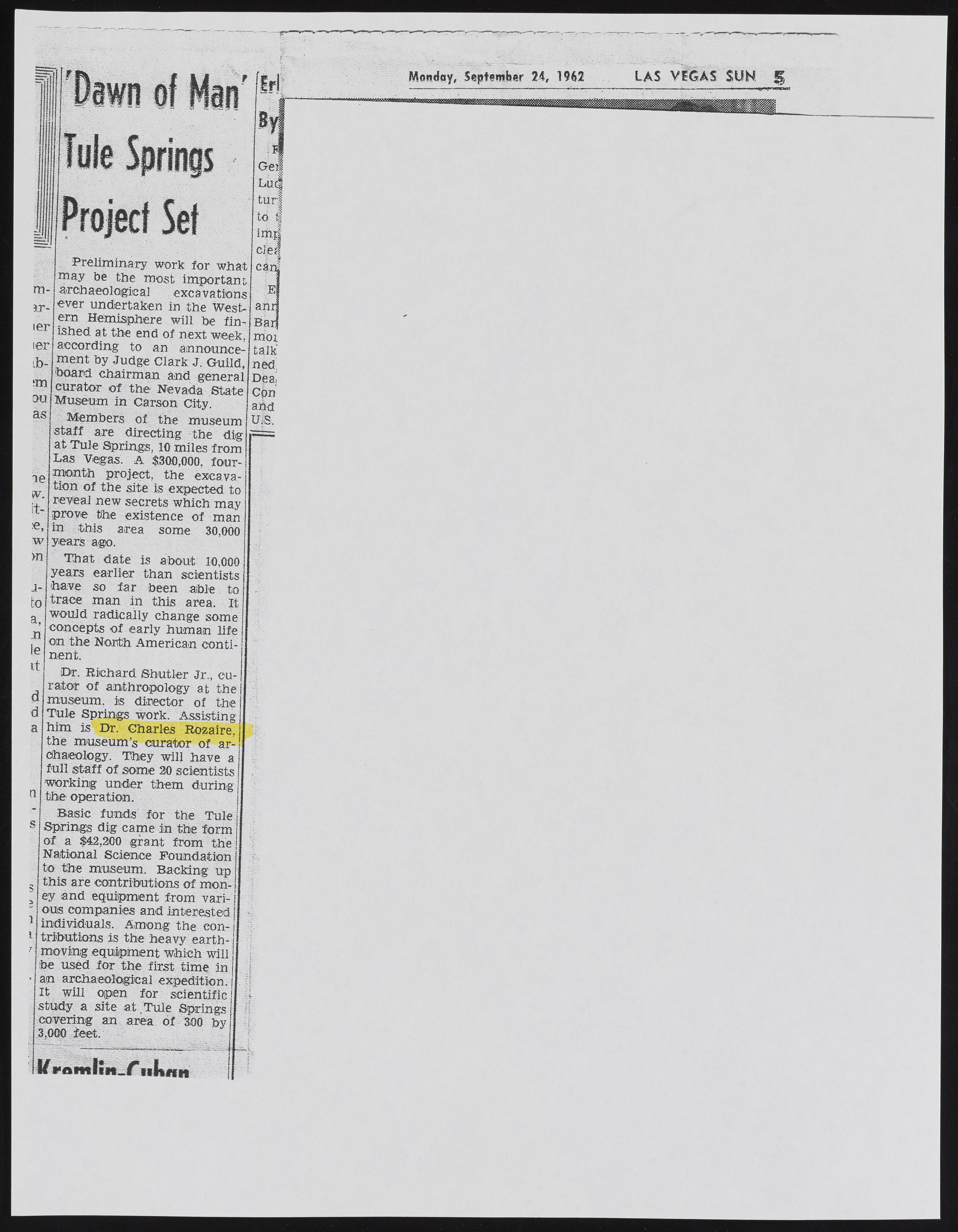Copyright & Fair-use Agreement
UNLV Special Collections provides copies of materials to facilitate private study, scholarship, or research. Material not in the public domain may be used according to fair use of copyrighted materials as defined by copyright law. Please cite us.
Please note that UNLV may not own the copyright to these materials and cannot provide permission to publish or distribute materials when UNLV is not the copyright holder. The user is solely responsible for determining the copyright status of materials and obtaining permission to use material from the copyright holder and for determining whether any permissions relating to any other rights are necessary for the intended use, and for obtaining all required permissions beyond that allowed by fair use.
Read more about our reproduction and use policy.
I agree.Information
Digital ID
Permalink
Details
More Info
Rights
Digital Provenance
Publisher
Transcription
m-ie v. gl :e Preliminary work for what may be the most important archaeological excavations *r-TeV€r undertaken in the West- _ ern Hemisphere will he finished at the end of next week, ter I according to an amnounce-ib- ment by Judge Clark J. Guild, ! board chairman and general m curator of the Nevada State Du Museum in Carson City. as • Members of the museum staff are directing the dig at Tule Springs, 10 miles from Las Vegas. A $300,000, four-month project, the excavation of the site is expected to reveal new secrets which may prove the existence of man in this area some 30,000 w! years ago. >n! That date is about 10,000 years earlier than scientists have so far been able to j-o trace man in this area. It would radically change some j concepts of early human life j on the North American conti- j nent. iDr. Richard Shutler Jr., curator of anthropology at the museum, is director of the Tule Springs work: Assisting him is Dr. Charles Rozaire, the museum’s curator of archaeology. They will have a full staff of some 20 scientists I ?working under them during the operation. Basic funds for the Tule Springs dig came in the form of a $42,200 grant from the National Science Foundation to the museum. Backing up this are contributions of money and equipment from vari-i ouis companies and interested j individuals. Among the contributions is the heavy earth-moving equipment which will be used for the first time in an archaeological expedition. It will open for scientific study a site at /Tule Springs covering an area of 3.00 by 3,000 feet. a, Jjj le it d 1 a n s M r a m li i t ./ 'i ij k f f ii ?del • i - f can iI an; Ba: moi talk ned, Deal Cpn and

